Digital art
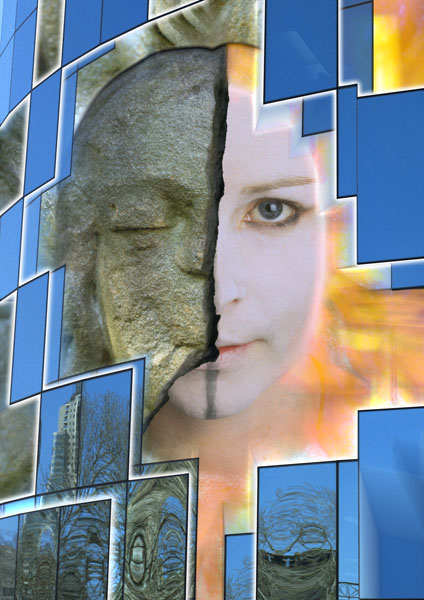 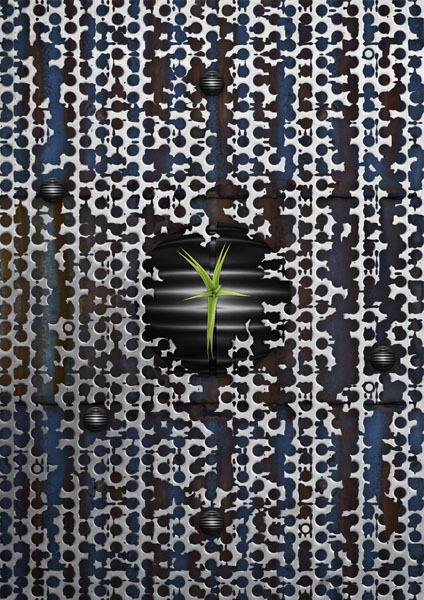 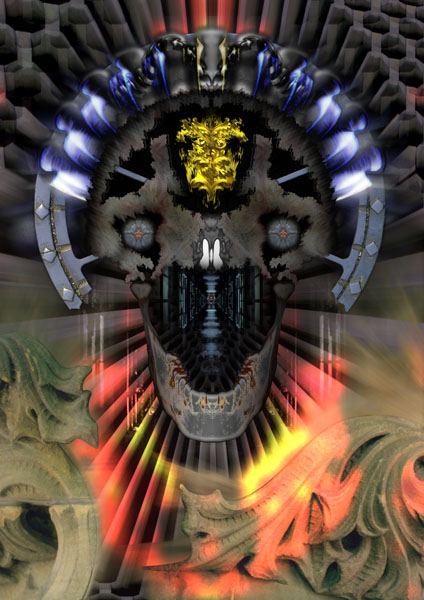 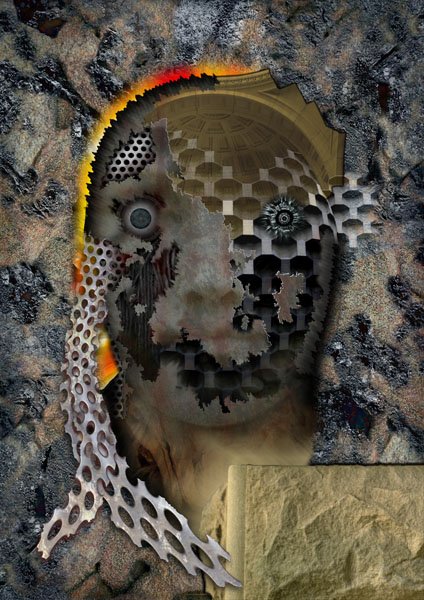 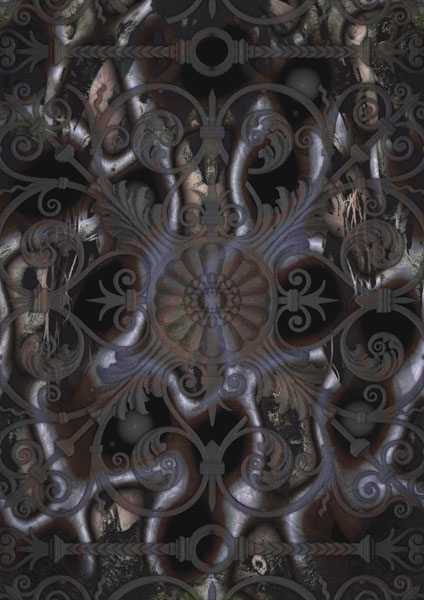 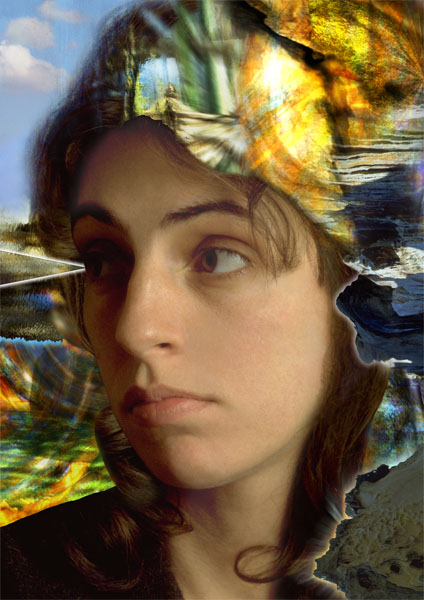 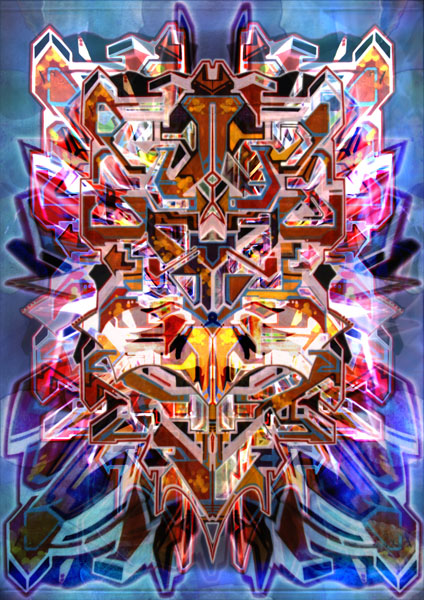 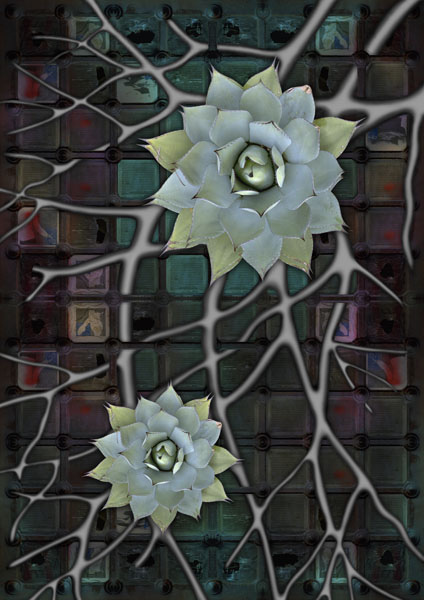 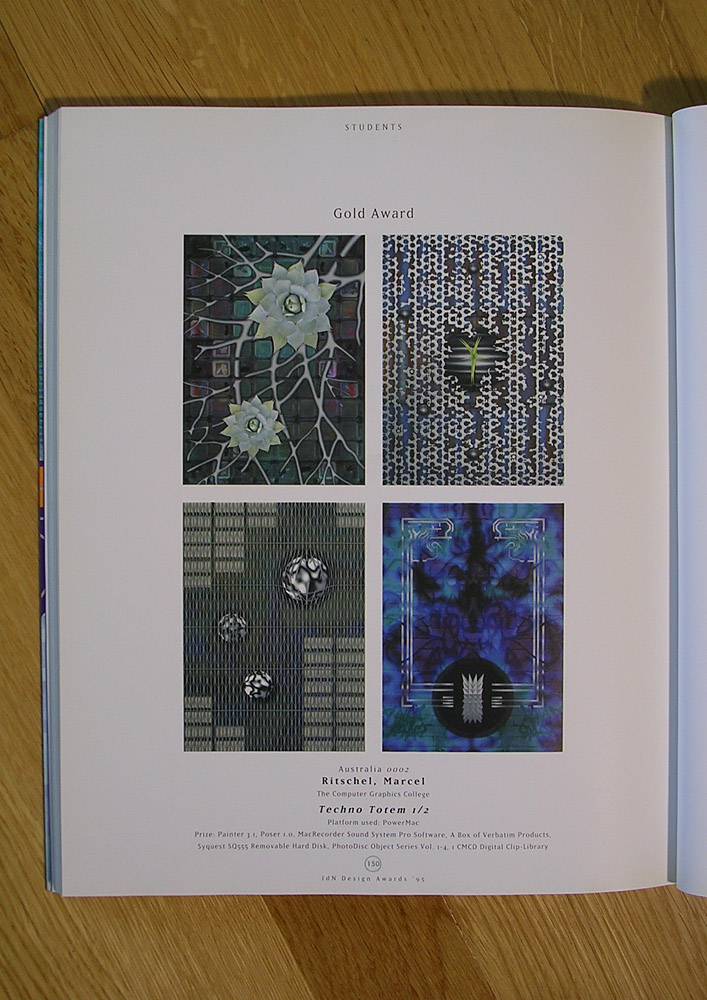 |
Relic 4 (Silver)
1996
Rosarium 2
1995
Relic 3 (Brass)
1996
Relic 2 (Iron)
1996
Subterranea
1995
Relic 5 (Gold)
1996
Liquid Crystal
1997
Rosarium 3
1995
Published artwork
1995
|
These pictures were created by designer/artist Marcel Ritschel between 1995 and 1999. They have their basis in digitized photographs as well as digital image manipulation.
Technology
The photos were taken with a Pentax 67 SLR using Agfa slidefilm, digitized with a drum scanner, and then transferred to Kodak Pro Foto CD. The artwork itself was produced on a Mac with Adobe Photoshop (3.0-5.0). In a final step, the digital file was printed on Fuji Pictropaper.
Intent / Strategy
The digital artworks take their cue from the black-and-white Photomontage of the preceding
five years. In both cases, the medium of photography primarily served in the acquisition of images from "the outside world"
to permit the visualization of an idea. The combination of images in the one frame goes back to the first double exposure
and the cubist tableau. However, the possibility of layering different images on top of each other - quasi three-dimensional
and electrically alterable - was new.
For the artist, a photo-digital collage became the means to both capture and construct reality. Objects and [sur]faces are
shown embedded in a matrix, they oscillate between the physical and the digital, between likeness and other, known and
unknown. The aim is not to deceive the observer but to augment reality - perhaps in the sense that infrared photography or
thermal imaging do. There is no grand lie [of the philosopher king] or "models of a real without origin" (Baudrillard).
Indeed, the relation of a photorealistic fragment to its physical point of origin is retained in the artist's collage -
like water lilies floating on the interface.
The strategy involves a continuum that folds back upon itself. Being-in-the-world means boots on the ground, concept in
mind, and camera in hand. Detachment can be practised in a dark room where the computer stands: Concept out of concept,
dreams within dreams, the flying spirit, trodden paths or pure coincidence, archetypes and self-expression, the house
behind the house ... And by the count of ten the final images are printed, framed and hung.
Concept / Content
"If it is in the nature of photographs to particularize, then once fragmented and reorganized, they can also be made to generalize - to symbolize groups of things. [This is reminiscent of] the Vitruvian principle of architectural design where every individual part, while still maintaining its individuality, is simultaneously transformed and elevated by being part of a greater whole. In the alchemical sense, this process could also be seen as a perpetual and cyclical transmutation of base elements into gold, then back again into base elements, indicating an ongoing clash between progressive and regressive forces [in the struggle] to build a new cosmos [...] The urge toward hybridization, as expressed through the works in this exhibition*, should be seen as an attempt to augment and synergise (not replace) the documentary properties of the original photographic fragments to help produce a multi-layered conceptual and visual effect." (Ritschel, 1995)
* FRAGMENT CONSTRUCTS, a solo exhibition of analogue and digital photomontages at the AD 163 Gallery in Glebe, Sydney, October 1995.
"Exploring the tensions between flesh and metal, the organic and the machine, chaos and order, Ritschel's work is fractal,
relational and utterly absorbing." (McArthur, 1995)
(1) The techno-genetic subject matter explored in the
Rosarium
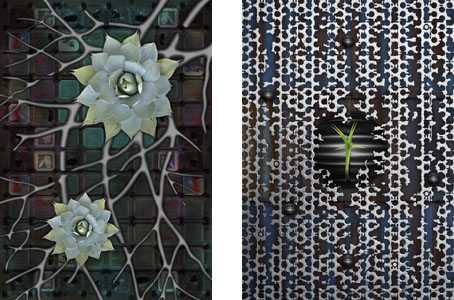 - and
Implant
- and
Implant
 series was inspired by Bruce Sterling's description of cyberspace as a "dark electric netherworld [that] has become a
vast flowering electronic landscape." The artist wanted to explore the hybrid surfaces emerging from a collision between
organic and non-organic forms.
series was inspired by Bruce Sterling's description of cyberspace as a "dark electric netherworld [that] has become a
vast flowering electronic landscape." The artist wanted to explore the hybrid surfaces emerging from a collision between
organic and non-organic forms.
(2) The sequence entitled
The Relics
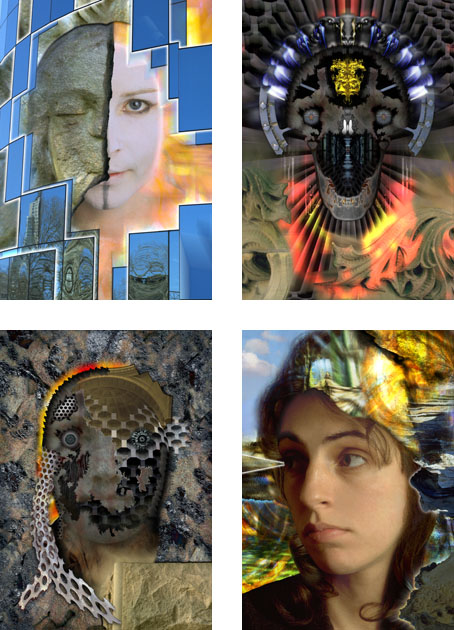 relates King Nebuchadnezzar's dream figure to alchemical practices and philosophy. The artist became interested in the
mystical journeys and psychic processes that alchemists allude to when they describe the transmutation of matter into
crystals, metals and elixirs. The images convey a kind of evolutionary oscillation between physical and digital modes
of being based on the symbolism of iron, brass, silver and gold.
relates King Nebuchadnezzar's dream figure to alchemical practices and philosophy. The artist became interested in the
mystical journeys and psychic processes that alchemists allude to when they describe the transmutation of matter into
crystals, metals and elixirs. The images convey a kind of evolutionary oscillation between physical and digital modes
of being based on the symbolism of iron, brass, silver and gold.
▶
